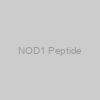 NOD1 Peptide |
|
42-460P |
ProSci |
0.1 mg |
405.6 EUR |
|
Description: (CT) NOD1 Peptide |
 NOD1 Peptide |
|
5947P |
ProSci |
0.05 mg |
197.7 EUR |
|
Description: (CT) NOD1 peptide |
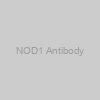 NOD1 Antibody |
|
25174 |
SAB |
100ul |
479 EUR |
 NOD1 Antibody |
|
25174-100ul |
SAB |
100ul |
468 EUR |
 NOD1 Antibody |
|
32256 |
SAB |
100ul |
439 EUR |
 NOD1 Antibody |
|
32256-100ul |
SAB |
100ul |
302.4 EUR |
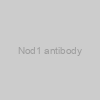 Nod1 antibody |
|
22788 |
SAB |
100ul |
479 EUR |
 Nod1 antibody |
|
22788-100ul |
SAB |
100ul |
468 EUR |
 NOD1 Antibody |
|
CSB-PA015914KA01HU- |
Cusabio |
each |
402 EUR |
|
|
|
Description: A polyclonal antibody against NOD1. Recognizes NOD1 from Human, Mouse, Rat. This antibody is Unconjugated. Tested in the following application: ELISA, WB, IHC;WB:1:500-1:2000, IHC:1:50-1:200 |
 NOD1 Antibody |
|
CSB-PA015914KA01HU-100ul |
Cusabio |
100ul |
466.8 EUR |
|
|
|
Description: A polyclonal antibody against NOD1. Recognizes NOD1 from Human, Mouse, Rat. This antibody is Unconjugated. Tested in the following application: ELISA, WB, IHC;WB:1:500-1:2000, IHC:1:50-1:200 |
 NOD1 Antibody |
|
E91246 |
EnoGene |
100ul |
255 EUR |
|
Description: Available in various conjugation types. |
 NOD1 Antibody |
|
F54615-0.08ML |
NSJ Bioreagents |
0.08 ml |
140.25 EUR |
|
|
|
Description: This gene encodes a member of the NOD (nucleotide-binding oligomerization domain) family. This member is a cytosolic protein. It contains an N-terminal caspase recruitment domain (CARD), a centrally located nucleotide-binding domain (NBD), and 10 tandem leucine-rich repeats (LRRs) in its C terminus. The CARD is involved in apoptotic signaling, LRRs participate in protein-protein interactions, and mutations in the NBD may affect the process of oligomerization and subsequent function of the LRR domain. This protein is an intracellular pattern-recognition receptor (PRR) that initiates inflammation in response to a subset of bacteria through the detection of bacterial diaminopimelic acid. Multiple alternatively spliced transcript variants differring in the 5' UTR have been described, but the full-length nature of these variants has not been determined. |
 NOD1 Antibody |
|
F54615-0.4ML |
NSJ Bioreagents |
0.4 ml |
322.15 EUR |
|
|
|
Description: This gene encodes a member of the NOD (nucleotide-binding oligomerization domain) family. This member is a cytosolic protein. It contains an N-terminal caspase recruitment domain (CARD), a centrally located nucleotide-binding domain (NBD), and 10 tandem leucine-rich repeats (LRRs) in its C terminus. The CARD is involved in apoptotic signaling, LRRs participate in protein-protein interactions, and mutations in the NBD may affect the process of oligomerization and subsequent function of the LRR domain. This protein is an intracellular pattern-recognition receptor (PRR) that initiates inflammation in response to a subset of bacteria through the detection of bacterial diaminopimelic acid. Multiple alternatively spliced transcript variants differring in the 5' UTR have been described, but the full-length nature of these variants has not been determined. |
 NOD1 Antibody |
|
DF6378 |
Affbiotech |
200ul |
420 EUR |
 NOD1 Antibody |
|
DF6378-100ul |
Affinity Biosciences |
100ul |
280 EUR |
|
|
 NOD1 Antibody |
|
DF6378-200ul |
Affinity Biosciences |
200ul |
350 EUR |
|
|
 NOD1 Antibody |
|
E305105 |
EnoGene |
100ug/200ul |
275 EUR |
|
Description: Available in various conjugation types. |
 NOD1 Antibody |
|
5947-002mg |
ProSci |
0.02 mg |
206.18 EUR |
|
|
|
Description: NOD1 Antibody: NOD1 is a member of the NOD (nucleotide-binding oligomerization domain) family, a group of proteins that are involved in innate immune defense. NOD1 contains an N-terminal caspase recruitment domain (CARD), a centrally located nucleotide-binding domain (NBD), and ten tandem leucine-rich repeats (LRRs) in its C-terminus. The CARD is involved in apoptotic signaling, and NOD1 activates caspase-9 and NF-κB. LRRs participate in protein-protein interactions, and mutations in the NBD may affect the process of oligomerization and subsequent function of the LRR domain. This protein is an intracellular pattern-recognition receptor (PRR) that initiates inflammation in response to a subset of bacteria through the detection of bacterial diaminopimelic acid. |
 NOD1 Antibody |
|
5947-01mg |
ProSci |
0.1 mg |
523.7 EUR |
|
|
|
Description: NOD1 Antibody: NOD1 is a member of the NOD (nucleotide-binding oligomerization domain) family, a group of proteins that are involved in innate immune defense. NOD1 contains an N-terminal caspase recruitment domain (CARD), a centrally located nucleotide-binding domain (NBD), and ten tandem leucine-rich repeats (LRRs) in its C-terminus. The CARD is involved in apoptotic signaling, and NOD1 activates caspase-9 and NF-κB. LRRs participate in protein-protein interactions, and mutations in the NBD may affect the process of oligomerization and subsequent function of the LRR domain. This protein is an intracellular pattern-recognition receptor (PRR) that initiates inflammation in response to a subset of bacteria through the detection of bacterial diaminopimelic acid. |
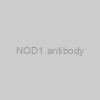 NOD1 antibody |
|
70R-13231 |
Fitzgerald |
100 ul |
550 EUR |
|
|
|
Description: Affinity purified Rabbit polyclonal NOD1 antibody |
 NOD1 Antibody |
|
ABD6378 |
Lifescience Market |
100 ug |
525.6 EUR |
 NOD1 Antibody |
|
1-CSB-PA047815 |
Cusabio |
-
Ask for price
-
Ask for price
|
|
|
|
|
Description: A polyclonal antibody against NOD1. Recognizes NOD1 from Human, Mouse. This antibody is Unconjugated. Tested in the following application: ELISA, IHC;ELISA:1:1000-1:5000, IHC:1:50-1:200 |
 NOD1 Antibody |
|
1-CSB-PA876477 |
Cusabio |
-
Ask for price
-
Ask for price
|
|
|
|
|
Description: A polyclonal antibody against NOD1. Recognizes NOD1 from Human, Mouse. This antibody is Unconjugated. Tested in the following application: ELISA, IHC;ELISA:1:1000-1:5000, IHC:1:50-1:200 |
 NOD1 Antibody |
|
RQ5831 |
NSJ Bioreagents |
100 ug |
356.15 EUR |
|
|
|
Description: Nucleotide-binding oligomerization domain-containing protein 1, also known as CARD4, is a protein receptor that in humans is encoded by the NOD1 gene. NOD1 is a member of NOD-like receptor protein family and is a close relative of NOD2. NOD1 is mapped to 7p14.3. It recognizes bacterial molecules and stimulates an immune reaction. NOD1 protein contains a caspase recruitment domain (CARD). This gene is an intracellular pattern recognition receptor, which is similar in structure to resistant proteins of plants, and mediates innate and acquired immunity by recognizing bacterial molecules containing D-glutamyl-meso-diaminopimelic acid (iE-DAP) moiety. What wore, it has been shown that NOD1 can sense cytosolic microbial products by monitoring the activation state of small Rho GTPases. |
 NOD1 Antibody |
|
RQ6083 |
NSJ Bioreagents |
100 ug |
356.15 EUR |
|
|
|
Description: Nucleotide-binding oligomerization domain-containing protein 1, also known as CARD4, is a protein receptor that in humans is encoded by the NOD1 gene. NOD1 is a member of NOD-like receptor protein family and is a close relative of NOD2. NOD1 is mapped to 7p14.3. It recognizes bacterial molecules and stimulates an immune reaction. NOD1 protein contains a caspase recruitment domain (CARD). This gene is an intracellular pattern recognition receptor, which is similar in structure to resistant proteins of plants, and mediates innate and acquired immunity by recognizing bacterial molecules containing D-glutamyl-meso-diaminopimelic acid (iE-DAP) moiety. What wore, it has been shown that NOD1 can sense cytosolic microbial products by monitoring the activation state of small Rho GTPases. |
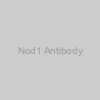 Nod1 Antibody |
|
R31707 |
NSJ Bioreagents |
100 ug |
356.15 EUR |
|
|
|
Description: Nucleotide-binding oligomerization domain-containing protein 1, also known as CARD4, is a protein receptor that in humans is encoded by the NOD1 gene. It is a member of NOD-like receptor protein family and is a close relative of Nod2. It recognizes bacterial molecules and stimulates an immune reaction. Nod1 contains a caspase recruitment domain (CARD). This gene is an intracellular pattern recognition receptor, which is similar in structure to resistant proteins of plants, and mediates innate and acquired immunity by recognizing bacterial molecules containing D-glutamyl-meso-diaminopimelic acid (iE-DAP) moiety. Additionally, it has been shown that Nod1 can sense cytosolic microbial products by monitoring the activation state of small Rho GTPases. |
 NOD1 Antibody |
|
R33706-100UG |
NSJ Bioreagents |
100 ug |
339.15 EUR |
|
|
|
Description: Additional name(s) for this target protein: Nucleotide-binding oligomerization domain containing 1 |
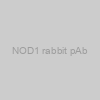 NOD1 rabbit pAb |
|
E28PN3266 |
EnoGene |
100μl |
255 EUR |
|
Description: Available in various conjugation types. |
 NOD1 Rabbit pAb |
|
E2501246 |
EnoGene |
100ul |
225 EUR |
|
Description: Available in various conjugation types. |
 NOD1 Rabbit pAb |
|
A1246-100ul |
Abclonal |
100 ul |
369.6 EUR |
 NOD1 Rabbit pAb |
|
A1246-200ul |
Abclonal |
200 ul |
550.8 EUR |
 NOD1 Rabbit pAb |
|
A1246-20ul |
Abclonal |
20 ul |
219.6 EUR |
 NOD1 Rabbit pAb |
|
A1246-50ul |
Abclonal |
50 ul |
267.6 EUR |
 NOD1 rabbit pAb |
|
E44H12150 |
EnoGene |
100ul |
255 EUR |
|
Description: Biotin-Conjugated, FITC-Conjugated , AF350 Conjugated , AF405M-Conjugated ,AF488-Conjugated, AF514-Conjugated ,AF532-Conjugated, AF555-Conjugated ,AF568-Conjugated , HRP-Conjugated, AF405S-Conjugated, AF405L-Conjugated , AF546-Conjugated, AF594-Conjugated , AF610-Conjugated, AF635-Conjugated , AF647-Conjugated , AF680-Conjugated , AF700-Conjugated , AF750-Conjugated , AF790-Conjugated , APC-Conjugated , PE-Conjugated , Cy3-Conjugated , Cy5-Conjugated , Cy5.5-Conjugated , Cy7-Conjugated Antibody |
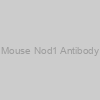 Mouse Nod1 Antibody |
|
abx030859-400ul |
Abbexa |
400 ul |
627.6 EUR |
|
|
 Mouse Nod1 Antibody |
|
abx030859-80l |
Abbexa |
80 µl |
343.2 EUR |
|
|
 Mouse Nod1 Antibody |
|
abx030859-400l |
Abbexa |
400 µl |
518.75 EUR |
 NOD1 cloning plasmid |
|
CSB-CL896866HU-10ug |
Cusabio |
10ug |
279.6 EUR |
|
|
|
Description: A cloning plasmid for the NOD1 gene. |
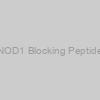 NOD1 Blocking Peptide |
|
DF6378-BP |
Affbiotech |
1mg |
234 EUR |
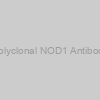 Polyclonal NOD1 Antibody |
|
APR06661G |
Leading Biology |
0.1 mg |
790.8 EUR |
|
Description: A polyclonal antibody raised in Rabbit that recognizes and binds to Human NOD1 . This antibody is tested and proven to work in the following applications: |
 Polyclonal NOD1 Antibody |
|
APR03070G |
Leading Biology |
0.05ml |
580.8 EUR |
|
Description: A polyclonal antibody raised in Rabbit that recognizes and binds to Human NOD1 . This antibody is tested and proven to work in the following applications: |
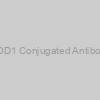 NOD1 Conjugated Antibody |
|
C32256 |
SAB |
100ul |
476.4 EUR |
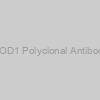 NOD1 Polyclonal Antibody |
|
E-AB-16300-120uL |
Elabscience Biotech |
120uL |
240 EUR |
|
|
|
Description: Unconjugated |
 NOD1 Polyclonal Antibody |
|
E-AB-16300-200uL |
Elabscience Biotech |
200uL |
399 EUR |
|
|
|
Description: Unconjugated |
 NOD1 Polyclonal Antibody |
|
E-AB-16300-20uL |
Elabscience Biotech |
20uL |
73 EUR |
|
|
|
Description: Unconjugated |
 NOD1 Polyclonal Antibody |
|
E-AB-16300-60uL |
Elabscience Biotech |
60uL |
143 EUR |
|
|
|
Description: Unconjugated |
 NOD1 Polyclonal Antibody |
|
E-AB-60281-120uL |
Elabscience Biotech |
120uL |
320 EUR |
|
|
|
Description: Unconjugated |
 NOD1 Polyclonal Antibody |
|
E-AB-60281-200uL |
Elabscience Biotech |
200uL |
530 EUR |
|
|
|
Description: Unconjugated |
 NOD1 Polyclonal Antibody |
|
E-AB-60281-60uL |
Elabscience Biotech |
60uL |
200 EUR |
|
|
|
Description: Unconjugated |
 NOD1 Polyclonal Antibody |
|
E-AB-60281-each |
Elabscience Biotech |
each |
Ask for price |
|
|
|
Description: Unconjugated |
 NOD1 Polyclonal Antibody |
|
E-AB-13110-120uL |
Elabscience Biotech |
120uL |
240 EUR |
|
|
|
Description: Unconjugated |
 NOD1 Polyclonal Antibody |
|
E-AB-13110-200uL |
Elabscience Biotech |
200uL |
399 EUR |
|
|
|
Description: Unconjugated |
 NOD1 Polyclonal Antibody |
|
E-AB-13110-20uL |
Elabscience Biotech |
20uL |
73 EUR |
|
|
|
Description: Unconjugated |
 NOD1 Polyclonal Antibody |
|
E-AB-13110-60uL |
Elabscience Biotech |
60uL |
143 EUR |
|
|
|
Description: Unconjugated |
 Human NOD1 ELISA KIT |
|
ELI-46124h |
Lifescience Market |
96 Tests |
988.8 EUR |
 NOD1 ELISA KIT|Human |
|
EF005372 |
Lifescience Market |
96 Tests |
826.8 EUR |
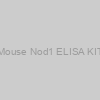 Mouse Nod1 ELISA KIT |
|
ELI-35306m |
Lifescience Market |
96 Tests |
1038 EUR |
-Human nucleotide-binding oligomerization domain containing 1 (NOD1)) NOD1 (untagged)-Human nucleotide-binding oligomerization domain containing 1 (NOD1) |
|
SC323936 |
Origene Technologies GmbH |
10 µg |
Ask for price |
-Human nucleotide-binding oligomerization domain containing 1 (NOD1)) NOD1 (untagged)-Human nucleotide-binding oligomerization domain containing 1 (NOD1) |
|
SC316302 |
Origene Technologies GmbH |
10 µg |
Ask for price |
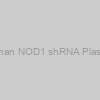 Human NOD1 shRNA Plasmid |
|
20-abx957041 |
Abbexa |
-
Ask for price
-
Ask for price
|
|
|
|
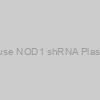 Mouse NOD1 shRNA Plasmid |
|
20-abx979820 |
Abbexa |
-
Ask for price
-
Ask for price
|
|
|
|
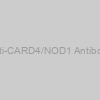 Anti-CARD4/NOD1 Antibody |
|
PB9294 |
BosterBio |
100ug/vial |
400.8 EUR |
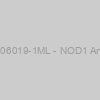 OACD06019-1ML - NOD1 Antibody |
|
OACD06019-1ML |
Aviva Systems Biology |
1ml |
669 EUR |
|
|
 OAAL00517-100UG - NOD1 Antibody |
|
OAAL00517-100UG |
Aviva Systems Biology |
100ug |
349 EUR |
|
|
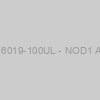 OACD06019-100UL - NOD1 Antibody |
|
OACD06019-100UL |
Aviva Systems Biology |
100ul |
199 EUR |
|
|
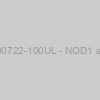 OAGA00722-100UL - NOD1 antibody |
|
OAGA00722-100UL |
Aviva Systems Biology |
100ul |
369 EUR |
|
|
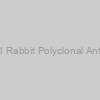 NOD1 Rabbit Polyclonal Antibody |
|
E10G04738 |
EnoGene |
100 μl |
275 EUR |
|
Description: Biotin-Conjugated, FITC-Conjugated , AF350 Conjugated , AF405M-Conjugated ,AF488-Conjugated, AF514-Conjugated ,AF532-Conjugated, AF555-Conjugated ,AF568-Conjugated , HRP-Conjugated, AF405S-Conjugated, AF405L-Conjugated , AF546-Conjugated, AF594-Conjugated , AF610-Conjugated, AF635-Conjugated , AF647-Conjugated , AF680-Conjugated , AF700-Conjugated , AF750-Conjugated , AF790-Conjugated , APC-Conjugated , PE-Conjugated , Cy3-Conjugated , Cy5-Conjugated , Cy5.5-Conjugated , Cy7-Conjugated Antibody |
 NOD1 Rabbit Polyclonal Antibody |
|
E10G34615 |
EnoGene |
100 μl |
275 EUR |
|
Description: Biotin-Conjugated, FITC-Conjugated , AF350 Conjugated , AF405M-Conjugated ,AF488-Conjugated, AF514-Conjugated ,AF532-Conjugated, AF555-Conjugated ,AF568-Conjugated , HRP-Conjugated, AF405S-Conjugated, AF405L-Conjugated , AF546-Conjugated, AF594-Conjugated , AF610-Conjugated, AF635-Conjugated , AF647-Conjugated , AF680-Conjugated , AF700-Conjugated , AF750-Conjugated , AF790-Conjugated , APC-Conjugated , PE-Conjugated , Cy3-Conjugated , Cy5-Conjugated , Cy5.5-Conjugated , Cy7-Conjugated Antibody |
 NOD1 Rabbit Polyclonal Antibody |
|
E10G11624 |
EnoGene |
100 μl |
275 EUR |
|
Description: Biotin-Conjugated, FITC-Conjugated , AF350 Conjugated , AF405M-Conjugated ,AF488-Conjugated, AF514-Conjugated ,AF532-Conjugated, AF555-Conjugated ,AF568-Conjugated , HRP-Conjugated, AF405S-Conjugated, AF405L-Conjugated , AF546-Conjugated, AF594-Conjugated , AF610-Conjugated, AF635-Conjugated , AF647-Conjugated , AF680-Conjugated , AF700-Conjugated , AF750-Conjugated , AF790-Conjugated , APC-Conjugated , PE-Conjugated , Cy3-Conjugated , Cy5-Conjugated , Cy5.5-Conjugated , Cy7-Conjugated Antibody |
 - Mouse nucleotide-binding oligomerization domain containing 1 (Nod1)) Nod1 (GFP-tagged) - Mouse nucleotide-binding oligomerization domain containing 1 (Nod1) |
|
MG211295 |
Origene Technologies GmbH |
10 µg |
Ask for price |
 - Human nucleotide-binding oligomerization domain containing 1 (NOD1)) NOD1 (GFP-tagged) - Human nucleotide-binding oligomerization domain containing 1 (NOD1) |
|
RG203759 |
Origene Technologies GmbH |
10 µg |
Ask for price |
 (pORF)) Nod1 ORF Vector (Rat) (pORF) |
|
ORF071394 |
ABM |
1.0 ug DNA |
607.2 EUR |
-Human nucleotide-binding oligomerization domain containing 1 (NOD1)) NOD1 (Myc-DDK-tagged)-Human nucleotide-binding oligomerization domain containing 1 (NOD1) |
|
RC203759 |
Origene Technologies GmbH |
10 µg |
Ask for price |
 (pORF)) NOD1 ORF Vector (Human) (pORF) |
|
ORF007140 |
ABM |
1.0 ug DNA |
114 EUR |
 (pORF)) Nod1 ORF Vector (Mouse) (pORF) |
|
ORF051497 |
ABM |
1.0 ug DNA |
607.2 EUR |
 (pORF)) Nod1 ORF Vector (Mouse) (pORF) |
|
ORF051498 |
ABM |
1.0 ug DNA |
607.2 EUR |
 Rabbit pAb) Mouse Nod1 (Center) Rabbit pAb |
|
E2618691 |
EnoGene |
100ul |
225 EUR |
|
Description: Available in various conjugation types. |
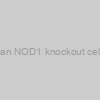 Human NOD1 knockout cell line |
|
ABC-KH10201 |
AcceGen |
1 vial |
Ask for price |
|
Description: Human NOD1 knockout cell line is HEK293/HeLa cell line, edited by CRISPR/Cas9 technology. |
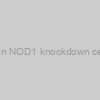 Human NOD1 knockdown cell line |
|
ABC-KD10201 |
AcceGen |
1 vial |
Ask for price |
|
Description: Human NOD1 knockdown cell line is engineered by our optimized transduction of the specific shRNA with lentivirus. Knockdown levels are determined via qRT-PCR. Gentaur offers generation of stable knockdown (RNAi) cell lines expressing shRNAs targeting genes of your interest. |
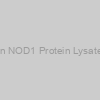 Human NOD1 Protein Lysate 20ug |
|
IHUNOD1PLLY20UG |
Innovative research |
each |
213 EUR |
|
|
|
Description: Human NOD1 Protein Lysate 20ug |
 (OKEH08039)) NOD1 ELISA Kit (Human) (OKEH08039) |
|
OKEH08039 |
Aviva Systems Biology |
96 Wells |
1075.2 EUR |
|
Description: Description of target: This gene encodes a member of the nucleotide-binding oligomerization domain (NOD)-like receptor (NLR) family of proteins. The encoded protein plays a role in innate immunity by acting as a pattern-recognition receptor (PRR) that binds bacterial peptidoglycans and initiates inflammation. This protein has also been implicated in the immune response to viral and parasitic infection. Major structural features of this protein include an N-terminal caspase recruitment domain (CARD), a centrally located nucleotide-binding domain (NBD), and 10 tandem leucine-rich repeats (LRRs) in its C terminus. The CARD is involved in apoptotic signaling, LRRs participate in protein-protein interactions, and mutations in the NBD may affect the process of oligomerization and subsequent function of the LRR domain. Mutations in this gene are associated with asthma, inflammatory bowel disease, Behcet disease and sarcoidosis in human patients.;Species reactivity: Human;Application: ELISA;Assay info: Assay Methodology: Quantitative Sandwich ELISA;Sensitivity: 0.078 ng/mL |
 (OKEH08040)) NOD1 ELISA Kit (Mouse) (OKEH08040) |
|
OKEH08040 |
Aviva Systems Biology |
96 Wells |
1310.4 EUR |
|
Description: Description of target: ;Species reactivity: Mouse;Application: ELISA;Assay info: Assay Methodology: Quantitative Competitive ELISA;Sensitivity: 0.096ng/mL |
 (OKCA00743)) NOD1 ELISA Kit (Human) (OKCA00743) |
|
OKCA00743 |
Aviva Systems Biology |
96 Wells |
999.6 EUR |
|
Description: Description of target: Enhances caspase-9-mediated apoptosis. Induces NF-kappa-B activity via RIPK2 and IKK-gamma. Confers responsiveness to intracellular bacterial lipopolysaccharides (LPS). Forms an intracellular sensing system along with ARHGEF2 for the detection of microbial effectors during cell invasion by pathogens. Required for RHOA and RIPK2 dependent NF-kappa-B signaling pathway activation upon S.flexneri cell invasion. Involved not only in sensing peptidoglycan (PGN)-derived muropeptides but also in the activation of NF-kappa-B by Shigella effector proteins IpgB2 and OspB. Recruits NLRP10 to the cell membrane following bacterial infection.;Species reactivity: Human;Application: ;Assay info: Assay Methodology: Quantitative Sandwich ELISA;Sensitivity: 3.9 pg/mL |
 - Rat nucleotide-binding oligomerization domain containing 1 (Nod1), (10 ug)) Nod1 (untagged ORF) - Rat nucleotide-binding oligomerization domain containing 1 (Nod1), (10 ug) |
|
RN202384 |
Origene Technologies GmbH |
10 µg |
Ask for price |
) Polyclonal NOD1 Antibody (C-term) |
|
APR03618G |
Leading Biology |
0.1ml |
580.8 EUR |
|
Description: A polyclonal antibody raised in Rabbit that recognizes and binds to Human NOD1 (C-term). This antibody is tested and proven to work in the following applications: |
) Polyclonal NOD1 Antibody (aa930-949) |
|
APR02826G |
Leading Biology |
0.05ml |
580.8 EUR |
|
Description: A polyclonal antibody raised in Rabbit that recognizes and binds to Human NOD1 (aa930-949). This antibody is tested and proven to work in the following applications: |
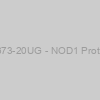 OCOA01673-20UG - NOD1 Protein Lysate |
|
OCOA01673-20UG |
Aviva Systems Biology |
20ug |
169 EUR |
|
|
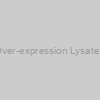 NOD1 Over-expression Lysate Product |
|
GWB-5A2987 |
GenWay Biotech |
0.1 mg |
Ask for price |
) Polyclonal Mouse Nod1 Antibody (Center) |
|
APR04406G |
Leading Biology |
0.1ml |
580.8 EUR |
|
Description: A polyclonal antibody raised in Rabbit that recognizes and binds to Human Mouse Nod1 (Center). This antibody is tested and proven to work in the following applications: |
) Polyclonal NOD1 Antibody (C-Terminus) |
|
APR02775G |
Leading Biology |
0.05mg |
580.8 EUR |
|
Description: A polyclonal antibody raised in Rabbit that recognizes and binds to Human NOD1 (C-Terminus). This antibody is tested and proven to work in the following applications: |
 Mouse Nod1 Rabbit Polyclonal Antibody |
|
E10G33787 |
EnoGene |
100 μl |
275 EUR |
|
Description: Biotin-Conjugated, FITC-Conjugated , AF350 Conjugated , AF405M-Conjugated ,AF488-Conjugated, AF514-Conjugated ,AF532-Conjugated, AF555-Conjugated ,AF568-Conjugated , HRP-Conjugated, AF405S-Conjugated, AF405L-Conjugated , AF546-Conjugated, AF594-Conjugated , AF610-Conjugated, AF635-Conjugated , AF647-Conjugated , AF680-Conjugated , AF700-Conjugated , AF750-Conjugated , AF790-Conjugated , APC-Conjugated , PE-Conjugated , Cy3-Conjugated , Cy5-Conjugated , Cy5.5-Conjugated , Cy7-Conjugated Antibody |
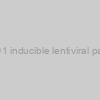 h NOD1 inducible lentiviral particles |
|
LVP751 |
GenTarget |
1x107 IFU/ml x 200ul |
541.2 EUR |
|
Description: Pre-made over-expression lentivirus for expressing human target: h NOD1 (nucleotide-binding oligomerization domain containing 1), [alternative names: CARD4; CLR7.1; NLRC1]. The sub-cloned codon sequence is identical (100% match) to CDS region in NCBI ID: NM_006092. It also contains a RFP-Blasticidin dual selection marker. |
 OPCD05707-10UG - NOD1 Recombinant Protein |
|
OPCD05707-10UG |
Aviva Systems Biology |
10ug |
139 EUR |
|
|
 OPCD05707-50UG - NOD1 Recombinant Protein |
|
OPCD05707-50UG |
Aviva Systems Biology |
50ug |
349 EUR |
|
|
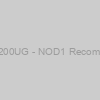 OPCD05707-200UG - NOD1 Recombinant Protein |
|
OPCD05707-200UG |
Aviva Systems Biology |
200ug |
699 EUR |
|
|
 - Mouse nucleotide-binding oligomerization domain containing 1 (Nod1), transcript variant 1, (10ug)) Nod1 (untagged) - Mouse nucleotide-binding oligomerization domain containing 1 (Nod1), transcript variant 1, (10ug) |
|
MC205444 |
Origene Technologies GmbH |
10 µg |
Ask for price |
) OKEH08039-96W - NOD1 ELISA Kit (Human) |
|
OKEH08039-96W |
Aviva Systems Biology |
96Wells |
725 EUR |
|
|
) OKEH08040-96W - NOD1 ELISA Kit (Mouse) |
|
OKEH08040-96W |
Aviva Systems Biology |
96Wells |
800 EUR |
|
|
) Nod1 sgRNA CRISPR Lentivector set (Rat) |
|
K6741701 |
ABM |
3 x 1.0 ug |
406.8 EUR |
 - Rat nucleotide-binding oligomerization domain containing 1 (Nod1), (10 ug)) Nod1 (Myc-DDK-tagged ORF) - Rat nucleotide-binding oligomerization domain containing 1 (Nod1), (10 ug) |
|
RR202384 |
Origene Technologies GmbH |
10 µg |
Ask for price |
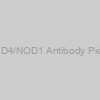 Anti-CARD4/NOD1 Antibody Picoband™ |
|
A00495-1 |
BosterBio |
10ug |
154 EUR |
|
|
|
Description: Western blot, 0.25-0.5μg/ml, Monkey |
 Anti-CARD4/NOD1 Antibody Picoband™ |
|
A00495-2 |
BosterBio |
10ug |
154 EUR |
|
|
|
Description: Western blot, 0.25-0.5μg/ml, Human;_x000D_Immunohistochemistry (Paraffin-embedded Section), 2-5μg/ml, Human;_x000D_Flow Cytometry, 1-3μg/1x106 cells, Human;_x000D_Direct ELISA, 0.1-0.5μg/ml, Human |
) Polyclonal NOD1 / CARD4 Antibody (C-Term) |
|
APG00381G |
Leading Biology |
0.1mg |
580.8 EUR |
|
Description: A polyclonal antibody raised in Goat that recognizes and binds to Human NOD1 / CARD4 (C-Term). This antibody is tested and proven to work in the following applications: |
) Nod1 sgRNA CRISPR Lentivector set (Mouse) |
|
K3911101 |
ABM |
3 x 1.0 ug |
406.8 EUR |
) NOD1 sgRNA CRISPR Lentivector set (Human) |
|
K1438501 |
ABM |
3 x 1.0 ug |
406.8 EUR |
 - Mouse nucleotide-binding oligomerization domain containing 1 (Nod1), transcript variant 1) Nod1 (Myc-DDK-tagged) - Mouse nucleotide-binding oligomerization domain containing 1 (Nod1), transcript variant 1 |
|
MR225900 |
Origene Technologies GmbH |
10 µg |
Ask for price |
 - Mouse nucleotide-binding oligomerization domain containing 1 (Nod1), transcript variant 2) Nod1 (Myc-DDK-tagged) - Mouse nucleotide-binding oligomerization domain containing 1 (Nod1), transcript variant 2 |
|
MR211295 |
Origene Technologies GmbH |
10 µg |
Ask for price |
 - Mouse nucleotide-binding oligomerization domain containing 1 (Nod1) transcript variant 1, (10ug)) Nod1 (GFP-tagged) - Mouse nucleotide-binding oligomerization domain containing 1 (Nod1) transcript variant 1, (10ug) |
|
MG225900 |
Origene Technologies GmbH |
10 µg |
Ask for price |
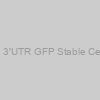 NOD1 3'UTR GFP Stable Cell Line |
|
TU065800 |
ABM |
1.0 ml |
1825.2 EUR |
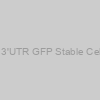 Nod1 3'UTR GFP Stable Cell Line |
|
TU164190 |
ABM |
1.0 ml |
Ask for price |
 Nod1 3'UTR GFP Stable Cell Line |
|
TU264064 |
ABM |
1.0 ml |
Ask for price |
 (pPM-C-HA)) NOD1 Protein Vector (Rat) (pPM-C-HA) |
|
PV285576 |
ABM |
500 ng |
1429.2 EUR |
 (pPB-C-His)) NOD1 Protein Vector (Rat) (pPB-C-His) |
|
PV285574 |
ABM |
500 ng |
1429.2 EUR |
 (pPB-N-His)) NOD1 Protein Vector (Rat) (pPB-N-His) |
|
PV285575 |
ABM |
500 ng |
1429.2 EUR |
 (pPM-C-His)) NOD1 Protein Vector (Rat) (pPM-C-His) |
|
PV285577 |
ABM |
500 ng |
1429.2 EUR |
 (pPM-C-HA)) NOD1 Protein Vector (Human) (pPM-C-HA) |
|
PV028559 |
ABM |
500 ng |
394.8 EUR |
 (pPM-C-HA)) NOD1 Protein Vector (Mouse) (pPM-C-HA) |
|
PV205988 |
ABM |
500 ng |
1278 EUR |
 (pPM-C-HA)) NOD1 Protein Vector (Mouse) (pPM-C-HA) |
|
PV205992 |
ABM |
500 ng |
1278 EUR |
 Cell Line) NOD1 Stable Knockout AGS (41A8) Cell Line |
|
T6187 |
ABM |
1x10^6 cells / 1.0 ml |
3950 EUR |
 Cell Line) NOD1 Stable Knockout AGS (41H8) Cell Line |
|
T6188 |
ABM |
1x10^6 cells / 1.0 ml |
3950 EUR |
 (pPB-C-His)) NOD1 Protein Vector (Human) (pPB-C-His) |
|
PV028557 |
ABM |
500 ng |
394.8 EUR |
 (pPB-N-His)) NOD1 Protein Vector (Human) (pPB-N-His) |
|
PV028558 |
ABM |
500 ng |
394.8 EUR |
 (pPM-C-His)) NOD1 Protein Vector (Human) (pPM-C-His) |
|
PV028560 |
ABM |
500 ng |
394.8 EUR |
 (pPB-C-His)) NOD1 Protein Vector (Mouse) (pPB-C-His) |
|
PV205986 |
ABM |
500 ng |
1278 EUR |
 (pPB-N-His)) NOD1 Protein Vector (Mouse) (pPB-N-His) |
|
PV205987 |
ABM |
500 ng |
1278 EUR |
 (pPM-C-His)) NOD1 Protein Vector (Mouse) (pPM-C-His) |
|
PV205989 |
ABM |
500 ng |
1278 EUR |
 (pPB-C-His)) NOD1 Protein Vector (Mouse) (pPB-C-His) |
|
PV205990 |
ABM |
500 ng |
1278 EUR |
 (pPB-N-His)) NOD1 Protein Vector (Mouse) (pPB-N-His) |
|
PV205991 |
ABM |
500 ng |
1278 EUR |
 (pPM-C-His)) NOD1 Protein Vector (Mouse) (pPM-C-His) |
|
PV205993 |
ABM |
500 ng |
1278 EUR |
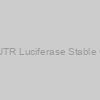 Nod1 3'UTR Luciferase Stable Cell Line |
|
TU114190 |
ABM |
1.0 ml |
Ask for price |
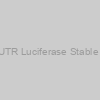 NOD1 3'UTR Luciferase Stable Cell Line |
|
TU015800 |
ABM |
1.0 ml |
1825.2 EUR |
 Nod1 3'UTR Luciferase Stable Cell Line |
|
TU214064 |
ABM |
1.0 ml |
Ask for price |
 (Target 1)) Nod1 sgRNA CRISPR Lentivector (Rat) (Target 1) |
|
K6741702 |
ABM |
1.0 ug DNA |
184.8 EUR |
 (Target 2)) Nod1 sgRNA CRISPR Lentivector (Rat) (Target 2) |
|
K6741703 |
ABM |
1.0 ug DNA |
184.8 EUR |
 (Target 3)) Nod1 sgRNA CRISPR Lentivector (Rat) (Target 3) |
|
K6741704 |
ABM |
1.0 ug DNA |
184.8 EUR |
 Human NOD1 Over-expressing Stable Cell Line |
|
ABC-X2055 |
AcceGen |
1 vial |
Ask for price |
|
Description: Gentaur can provide custom lentiviral constructs expressing any genes of interest as long as it is less than about 3 kb. Lentiviral technology enables us to efficiently generate stable expression lines which are then selected for moderate or high expressers, depending on the experimental requirements. If you are interested in specific lentiviral DNA constructs or have further questions, please contact us to discuss the details. NOD1 nucleotide-binding oligomerization domain containing 1 [ Homo sapiens ] http://www.ncbi.nlm.nih.gov/gene/10392 |
 (Target 1)) Nod1 sgRNA CRISPR Lentivector (Mouse) (Target 1) |
|
K3911102 |
ABM |
1.0 ug DNA |
184.8 EUR |
 (Target 2)) Nod1 sgRNA CRISPR Lentivector (Mouse) (Target 2) |
|
K3911103 |
ABM |
1.0 ug DNA |
184.8 EUR |
 (Target 3)) Nod1 sgRNA CRISPR Lentivector (Mouse) (Target 3) |
|
K3911104 |
ABM |
1.0 ug DNA |
184.8 EUR |
 (Target 1)) NOD1 sgRNA CRISPR Lentivector (Human) (Target 1) |
|
K1438502 |
ABM |
1.0 ug DNA |
184.8 EUR |
 (Target 2)) NOD1 sgRNA CRISPR Lentivector (Human) (Target 2) |
|
K1438503 |
ABM |
1.0 ug DNA |
184.8 EUR |
 (Target 3)) NOD1 sgRNA CRISPR Lentivector (Human) (Target 3) |
|
K1438504 |
ABM |
1.0 ug DNA |
184.8 EUR |
 - Human nucleotide-binding oligomerization domain containing 1 (NOD1), 200ul, >10^7 TU/mL) Lenti ORF particles, NOD1 (mGFP-tagged) - Human nucleotide-binding oligomerization domain containing 1 (NOD1), 200ul, >10^7 TU/mL |
|
RC203759L2V |
Origene Technologies GmbH |
200 µl |
Ask for price |
 - Human nucleotide-binding oligomerization domain containing 1 (NOD1), 200ul, >10^7 TU/mL) Lenti ORF particles, NOD1 (mGFP-tagged) - Human nucleotide-binding oligomerization domain containing 1 (NOD1), 200ul, >10^7 TU/mL |
|
RC203759L4V |
Origene Technologies GmbH |
200 µl |
Ask for price |
 - Rat nucleotide-binding oligomerization domain containing 1 (Nod1), (10 ug)) Lenti ORF clone of Nod1 (mGFP-tagged ORF) - Rat nucleotide-binding oligomerization domain containing 1 (Nod1), (10 ug) |
|
RR202384L4 |
Origene Technologies GmbH |
10 µg |
Ask for price |
 - Rat nucleotide-binding oligomerization domain containing 1 (Nod1), 200ul, >10^7 TU/mL) Lenti ORF particles, Nod1 (GFP-tagged ORF) - Rat nucleotide-binding oligomerization domain containing 1 (Nod1), 200ul, >10^7 TU/mL |
|
RR202384L4V |
Origene Technologies GmbH |
200 µl |
Ask for price |
 - Human nucleotide-binding oligomerization domain containing 1 (NOD1), 200ul, >10^7 TU/mL) Lenti ORF particles, NOD1 (Myc-DDK tagged) - Human nucleotide-binding oligomerization domain containing 1 (NOD1), 200ul, >10^7 TU/mL |
|
RC203759L1V |
Origene Technologies GmbH |
200 µl |
Ask for price |
 - Human nucleotide-binding oligomerization domain containing 1 (NOD1), 200ul, >10^7 TU/mL) Lenti ORF particles, NOD1 (Myc-DDK tagged) - Human nucleotide-binding oligomerization domain containing 1 (NOD1), 200ul, >10^7 TU/mL |
|
RC203759L3V |
Origene Technologies GmbH |
200 µl |
Ask for price |
 - Mouse nucleotide-binding oligomerization domain containing 1 (Nod1), transcript variant 1) Lenti ORF clone of Nod1 (mGFP-tagged) - Mouse nucleotide-binding oligomerization domain containing 1 (Nod1), transcript variant 1 |
|
MR225900L4 |
Origene Technologies GmbH |
10 µg |
Ask for price |
 - Mouse nucleotide-binding oligomerization domain containing 1 (Nod1), transcript variant 2) Lenti ORF clone of Nod1 (mGFP-tagged) - Mouse nucleotide-binding oligomerization domain containing 1 (Nod1), transcript variant 2 |
|
MR211295L2 |
Origene Technologies GmbH |
10 µg |
Ask for price |
 - Mouse nucleotide-binding oligomerization domain containing 1 (Nod1), transcript variant 2) Lenti ORF clone of Nod1 (mGFP-tagged) - Mouse nucleotide-binding oligomerization domain containing 1 (Nod1), transcript variant 2 |
|
MR211295L4 |
Origene Technologies GmbH |
10 µg |
Ask for price |
 - Rat nucleotide-binding oligomerization domain containing 1 (Nod1), (10 ug)) Lenti ORF clone of Nod1 (Myc-DDK-tagged ORF) - Rat nucleotide-binding oligomerization domain containing 1 (Nod1), (10 ug) |
|
RR202384L3 |
Origene Technologies GmbH |
10 µg |
Ask for price |
 - Rat nucleotide-binding oligomerization domain containing 1 (Nod1), 200ul, >10^7 TU/mL) Lenti ORF particles, Nod1 (Myc-DDK-tagged ORF) - Rat nucleotide-binding oligomerization domain containing 1 (Nod1), 200ul, >10^7 TU/mL |
|
RR202384L3V |
Origene Technologies GmbH |
200 µl |
Ask for price |
 (CMV) (pLenti-GIII-CMV)) NOD1 Lentiviral Vector (Rat) (CMV) (pLenti-GIII-CMV) |
|
LV645613 |
ABM |
1.0 ug DNA |
1626 EUR |
 (UbC) (pLenti-GIII-UbC)) NOD1 Lentiviral Vector (Rat) (UbC) (pLenti-GIII-UbC) |
|
LV645617 |
ABM |
1.0 ug DNA |
1626 EUR |
 (EF1a) (pLenti-GIII-EF1a)) NOD1 Lentiviral Vector (Rat) (EF1a) (pLenti-GIII-EF1a) |
|
LV645618 |
ABM |
1.0 ug DNA |
1626 EUR |
 - Mouse nucleotide-binding oligomerization domain containing 1 (Nod1), transcript variant 1) Lenti ORF clone of Nod1 (Myc-DDK-tagged) - Mouse nucleotide-binding oligomerization domain containing 1 (Nod1), transcript variant 1 |
|
MR225900L3 |
Origene Technologies GmbH |
10 µg |
Ask for price |
 - Mouse nucleotide-binding oligomerization domain containing 1 (Nod1), transcript variant 2) Lenti ORF clone of Nod1 (Myc-DDK-tagged) - Mouse nucleotide-binding oligomerization domain containing 1 (Nod1), transcript variant 2 |
|
MR211295L1 |
Origene Technologies GmbH |
10 µg |
Ask for price |
 - Mouse nucleotide-binding oligomerization domain containing 1 (Nod1), transcript variant 2) Lenti ORF clone of Nod1 (Myc-DDK-tagged) - Mouse nucleotide-binding oligomerization domain containing 1 (Nod1), transcript variant 2 |
|
MR211295L3 |
Origene Technologies GmbH |
10 µg |
Ask for price |
 Cell Line) NOD1 Stable Knockdown AGS (AGS cl.1) Cell Line |
|
T6189 |
ABM |
1x10^6 cells / 1.0 ml |
3950 EUR |
 (C-term) rabbit polyclonal antibody, Purified) CARD4 (NOD1) (C-term) rabbit polyclonal antibody, Purified |
|
AP31232PU-N |
Origene Technologies GmbH |
50 µg |
Ask for price |
 (C-term) rabbit polyclonal antibody, Purified) CARD4 (NOD1) (C-term) rabbit polyclonal antibody, Purified |
|
AP17920PU-N |
Origene Technologies GmbH |
400 µl |
Ask for price |
 - Mouse nucleotide-binding oligomerization domain containing 1 (Nod1), transcript variant 1, 200ul, >1) Lenti ORF particles, Nod1 (Myc-DDK-tagged) - Mouse nucleotide-binding oligomerization domain containing 1 (Nod1), transcript variant 1, 200ul, >1 |
|
MR225900L3V |
Origene Technologies GmbH |
200 µl |
Ask for price |
 - Mouse nucleotide-binding oligomerization domain containing 1 (Nod1), transcript variant 1, 200ul, >10^7) Lenti ORF particles, Nod1 (GFP-tagged) - Mouse nucleotide-binding oligomerization domain containing 1 (Nod1), transcript variant 1, 200ul, >10^7 |
|
MR225900L4V |
Origene Technologies GmbH |
200 µl |
Ask for price |
 - Mouse nucleotide-binding oligomerization domain containing 1 (Nod1), transcript variant 2, 200ul, >1) Lenti ORF particles, Nod1 (Myc-DDK-tagged) - Mouse nucleotide-binding oligomerization domain containing 1 (Nod1), transcript variant 2, 200ul, >1 |
|
MR211295L1V |
Origene Technologies GmbH |
200 µl |
Ask for price |
 - Mouse nucleotide-binding oligomerization domain containing 1 (Nod1), transcript variant 2, 200ul, >10^7) Lenti ORF particles, Nod1 (GFP-tagged) - Mouse nucleotide-binding oligomerization domain containing 1 (Nod1), transcript variant 2, 200ul, >10^7 |
|
MR211295L2V |
Origene Technologies GmbH |
200 µl |
Ask for price |
 - Mouse nucleotide-binding oligomerization domain containing 1 (Nod1), transcript variant 2, 200ul, >1) Lenti ORF particles, Nod1 (Myc-DDK-tagged) - Mouse nucleotide-binding oligomerization domain containing 1 (Nod1), transcript variant 2, 200ul, >1 |
|
MR211295L3V |
Origene Technologies GmbH |
200 µl |
Ask for price |
 - Mouse nucleotide-binding oligomerization domain containing 1 (Nod1), transcript variant 2, 200ul, >10^7) Lenti ORF particles, Nod1 (GFP-tagged) - Mouse nucleotide-binding oligomerization domain containing 1 (Nod1), transcript variant 2, 200ul, >10^7 |
|
MR211295L4V |
Origene Technologies GmbH |
200 µl |
Ask for price |
 Nod1 ELISA Kit| Mouse Nucleotide-binding oligomerization domain |
|
EF015735 |
Lifescience Market |
96 Tests |
826.8 EUR |
 - 3 unique 27mer siRNA duplexes - 2 nmol each) Nod1 (Rat) - 3 unique 27mer siRNA duplexes - 2 nmol each |
|
SR502098 |
Origene Technologies GmbH |
2 nmol |
Ask for price |
 - 3 unique 27mer siRNA duplexes - 2 nmol each) Nod1 (Mouse) - 3 unique 27mer siRNA duplexes - 2 nmol each |
|
SR421404 |
Origene Technologies GmbH |
2 nmol |
Ask for price |
 - 3 unique 27mer siRNA duplexes - 2 nmol each) NOD1 (Human) - 3 unique 27mer siRNA duplexes - 2 nmol each |
|
SR307041 |
Origene Technologies GmbH |
2 nmol |
Ask for price |
) Nod1 sgRNA CRISPR/Cas9 All-in-One Lentivector set (Rat) |
|
K6741705 |
ABM |
3 x 1.0 ug |
451.2 EUR |
) Nod1 sgRNA CRISPR/Cas9 All-in-One Lentivector set (Mouse) |
|
K3911105 |
ABM |
3 x 1.0 ug |
451.2 EUR |
) NOD1 sgRNA CRISPR/Cas9 All-in-One Lentivector set (Human) |
|
K1438505 |
ABM |
3 x 1.0 ug |
451.2 EUR |
 Antibody) Nucleotide Binding Oligomerization Domain Containing Protein 1 (NOD1) Antibody |
|
20-abx212259 |
Abbexa |
-
Ask for price
-
Ask for price
|
|
|
|
 Antibody) Nucleotide Binding Oligomerization Domain Containing Protein 1 (NOD1) Antibody |
|
20-abx212260 |
Abbexa |
-
Ask for price
-
Ask for price
|
|
|
|
 Antibody) Nucleotide Binding Oligomerization Domain Containing Protein 1 (NOD1) Antibody |
|
20-abx104722 |
Abbexa |
-
Ask for price
-
Ask for price
-
Ask for price
-
Ask for price
-
Ask for price
|
- 100 ug
- 10 ug
- 1 mg
- 200 ug
- 50 ug
|
|
|
 Antibody) Nucleotide Binding Oligomerization Domain Containing Protein 1 (NOD1) Antibody |
|
abx104722-100g |
Abbexa |
100 µg |
750 EUR |
 Antibody) Nucleotide Binding Oligomerization Domain Containing Protein 1 (NOD1) Antibody |
|
abx104722-20g |
Abbexa |
20 µg |
275 EUR |
 Antibody) Nucleotide Binding Oligomerization Domain Containing Protein 1 (NOD1) Antibody |
|
abx104722-50g |
Abbexa |
50 µg |
337.5 EUR |
 Antibody) Nucleotide Binding Oligomerization Domain Containing Protein 1 (NOD1) Antibody |
|
abx212259-100l |
Abbexa |
100 µl |
350 EUR |
 Antibody) Nucleotide Binding Oligomerization Domain Containing Protein 1 (NOD1) Antibody |
|
abx212259-50l |
Abbexa |
50 µl |
250 EUR |
 Antibody) Nucleotide Binding Oligomerization Domain Containing Protein 1 (NOD1) Antibody |
|
abx212260-100l |
Abbexa |
100 µl |
350 EUR |
 Antibody) Nucleotide Binding Oligomerization Domain Containing Protein 1 (NOD1) Antibody |
|
abx212260-50l |
Abbexa |
50 µl |
250 EUR |
 Antibody) Nucleotide-Binding Oligomerization Domain-Containing Protein 1 (NOD1) Antibody |
|
abx430272-200ul |
Abbexa |
200 ul |
460.8 EUR |
|
|
 Antibody) Nucleotide-Binding Oligomerization Domain-Containing Protein 1 (NOD1) Antibody |
|
abx038077-100ug |
Abbexa |
100 ug |
469.2 EUR |
|
|
 Antibody) Nucleotide-Binding Oligomerization Domain-Containing Protein 1 (NOD1) Antibody |
|
abx117079-100ug |
Abbexa |
100 ug |
560.4 EUR |
|
|
 Antibody) Nucleotide-Binding Oligomerization Domain-Containing Protein 1 (NOD1) Antibody |
|
20-abx001158 |
Abbexa |
-
Ask for price
-
Ask for price
-
Ask for price
-
Ask for price
|
- 100 ul
- 200 ul
- 20 ul
- 50 ul
|
|
|






